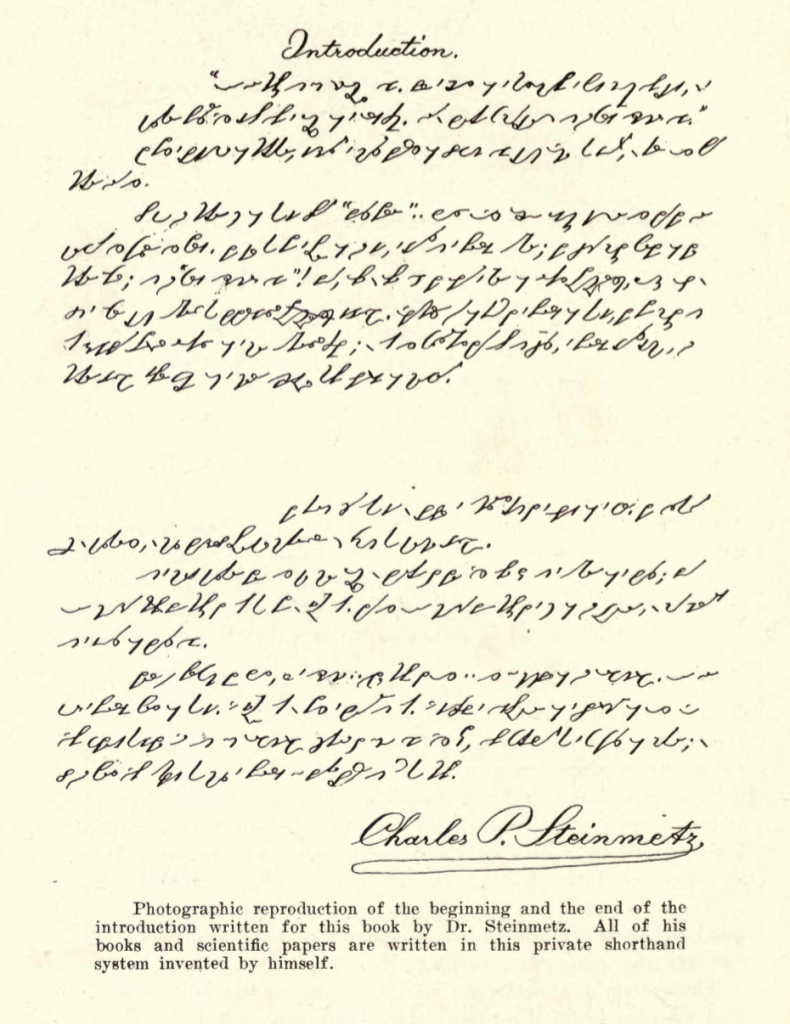 Charles Ripley’s “Romance of a Great Factory” is a 1919 love letter to the Schenectady General Electric works, printed by the Gazette Press, and with an introduction by none other than Dr. Charles P. Steinmetz, the electrical wizard. In an afterword section titled “Fragments,” Ripley presented a short explanation of “How Dr. Steinmetz Writes,” detailing his self-created shorthand.
Charles Ripley’s “Romance of a Great Factory” is a 1919 love letter to the Schenectady General Electric works, printed by the Gazette Press, and with an introduction by none other than Dr. Charles P. Steinmetz, the electrical wizard. In an afterword section titled “Fragments,” Ripley presented a short explanation of “How Dr. Steinmetz Writes,” detailing his self-created shorthand.
“Dr. Steinmetz, one of the greatest authorities on matters electrical, and an author of many volumes useful to the scientific world, possesses no ‘neck in the bottle,’ when it comes to jotting down the results of his researches in his wonderful laboratory at Schenectady. All of his writing is done in shorthand; that is, this shorthand is the medium between his mind and the typewriter and printing press.”
He goes on to quote Steinmetz as saying:
“With this shorthand I can write as fast as I can think. The only other way in which I could put down my thoughts as fast as I could think, would be to dictate to a phonograph but I have not always a phonograph with me. I learned this shorthand while I was in high school in Europe, and while in college took all of my notes in shorthand. All of these notes I have preserved and had bound, and I can read them as well after thirty-five years as I could after thirty-five minutes.”
Here please allow Hoxsie to admit that his own handwriting is often indecipherable after 35 seconds.
Ripley said that Steinmetz’s system, evolved as the best adapted for writing on electrical subjects, was based on the Arends stenography system taught in Europe, under which words were written phonetically, such that “height” would be written as h, long i, t.
“With a view of affording every reader some knowledge of Dr. Steinmetz’ system, a reproduction is given of the alphabet, written out by the famous electrical wizard himself. A second illustration is given [shown above] which shows the start and finish of Dr. Steinmetz’ introduction at the beginning of this book and how it looked when written originally by him in his shorthand. The space required for the shorthand is but approximately one-third of the introduction when typed with double spaced lines.”

Leave a Reply